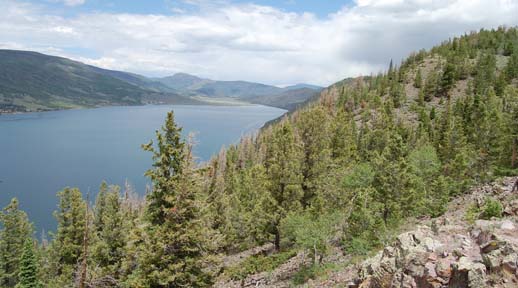Typical indicators of rangeland health are used to describe health and functionality of a variety of rangeland ecosystems. Similar indicators may be applied to forested locations to examine ecological health at a local forest level. Four rangeland health indicators were adapted and applied to data compiled by the U.S. Department of Agriculture, Forest Service, Rocky Mountain Research Station’s Forest Inventory and Analysis (FIA) program for research locations on the Fishlake National Forest in central Utah. These data can be used by local forest managers to determine the health status of the local forest and to identify the proportion of sites that may be functioning at risk. Sites considered to be functioning at risk are those in which integrity and stability of site characteristics (soil, vegetation, water, and air) and ecological processes of a balanced ecosystem are threatened. We found the noxious weed and bare ground indicators can be readily used to determine sites at risk. Clear thresholds need to be further defined for application of the species composition and shrub indicators to describe health and functionality of forested sites. With clearly defined thresholds, ecosystem health of forests and rangelands could be monitored with the application of these and other indicators using FIA data.
Image Source: USDA Forest Service

